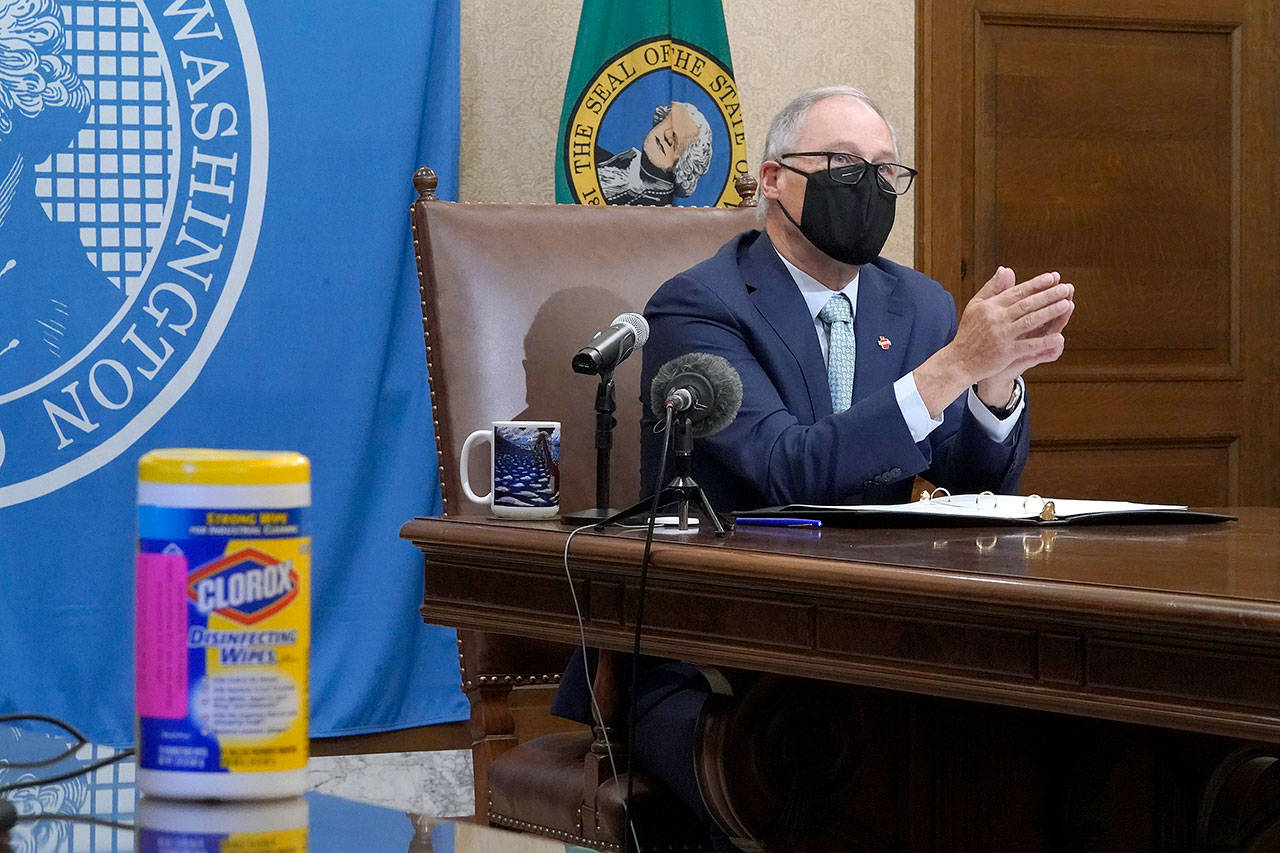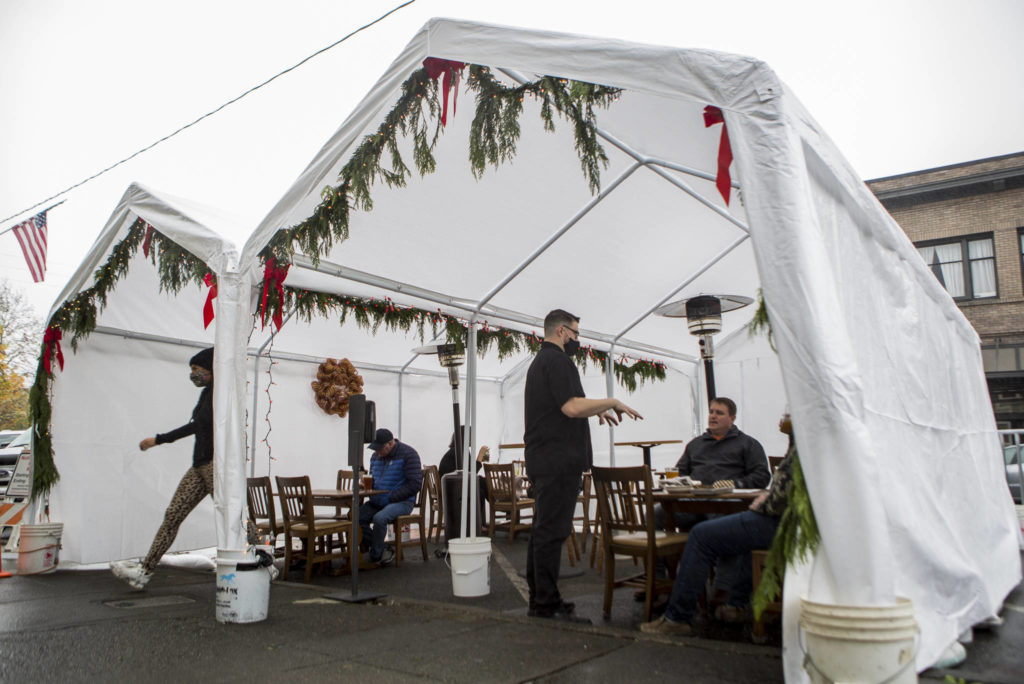OLYMPIA — Restaurants may soon be serving indoors again in Washington. Bowling alleys, movie theaters and card rooms might be welcoming customers back inside, as well.
But probably not as quickly in Snohomish County as elsewhere.
Gov. Jay Inslee on Tuesday announced a change in the state’s approach to reopening to ease some COVID-19 restrictions in areas where the rate of coronavirus infections and hospitalizations are flat or declining.
The new blueprint, dubbed “Healthy Washington,” aims to restart parts of the economy and public life in stages, starting Monday. But what the governor rolled out outlines only two phases and keeps restrictions on most retailers in place for the foreseeable future.
“We know we can’t reopen every business today,” Inslee said in an online news conference, but this will be a road map to do that.
Where previous plans used a county-by-county approach to reopening, Healthy Washington breaks the state into eight regions. Snohomish County is part of the Puget Sound region, with King and Pierce counties.
Inslee settled on the approach because, he said, “We know viruses do not respect county boundaries.”
To advance, a region must collectively show, over two weeks, 10% decreases in both case rates and hospitalizations, as well as ICU occupancy at less than 90% and a test positivity rate under 10%.
Each region is starting in the first phase. State health officials will evaluate data weekly and determine on Fridays if a region can advance to the second phase. And, they cautioned, a region can go backwards if those metrics trend in the wrong direction.
“The numbers will tell the tale,” Inslee said.
Some regions could move to the second phase as early as Monday, officials said.
In Phase 2, restaurants can reopen with a maximum of 25% capacity and a limit of six people per table. Also, indoor movie theaters, bowling alleys, card rooms, aquariums and museums can reopen with up to 25% occupancy.
Inslee’s new approach keeps in place indefinitely other restrictions imposed in November that were to expire Monday. Those rules require grocery stores and retailers, along with hair salons, barber shops and tattoo parlors, to continue to limit the number of customers they serve at any one time.
Inslee said additional phases will be added, but he did not say when.
Snohomish County isn’t likely to find itself reaching the second phase right away.
After two weeks of declining case counts in December, the county’s rolling transmission rate ticked upward from 329 new cases per 100,000 residents to 350 per 100,000.
November and December were the deadliest months of the pandemic in Snohomish County. And hospitalizations from the virus remain high.
“It seems clear to me that at least in the central area, we’re nowhere close to really easing up restrictions and are not headed in the right direction fast enough,” Snohomish County Executive Dave Somers said during a Tuesday media briefing. “So quite positive, in our area, those restrictions will remain in place.”
Local health officials are hopeful the virus’ third wave in the county may have peaked, but it’s too early to tell.
“Right now, we’re really relying on everybody to continue doing all the things we’ve been asking since the start of the pandemic,” Snohomish Health District officer Dr. Chris Spitters said during a separate Tuesday media briefing.
That includes wearing a mask around anyone not in your household and limiting social gatherings.
“We’re seeing some signs that disease growth has slowed, has even leveled off in many communities,” said Dr. Umair Shah, the state’s new secretary of health.
This new approach, he said, “is a path forward to allow us to balance the fight against COVID-19 and saving as many lives as we can with reopening the economy and getting as many people vaccinated as possible.”
The leader of a statewide restaurant group blasted the plan, noting that Washington residents and business owners are tiring of living under some of the most restrictive limits of any state in the nation.
“Today’s announcement is not a roadmap to recovery. It is a roadmap to a near-complete collapse of main street neighborhood restaurants and hospitality businesses,” Anthony Anton, president and chief executive officer of the Washington Hospitality Association, said in a statement.
“We will be talking with our members immediately to get a sense of how they would like to proceed, as this plan is not acceptable to the thousands of small businesses whose livelihoods are hanging in the balance and the hundreds of thousands of employees who depend on us,” he said.
Inslee, as he has throughout the pandemic, said the tough approach has resulted in a lower infection rate and fewer deaths in Washington compared to other states.
“We’re saving lives here … by the thousands,” he said.
Herlald reporter Jerry Cornfield: jcornfield@heraldnet.com | @dospueblos
Talk to us
> Give us your news tips.
> Send us a letter to the editor.
> More Herald contact information.


























